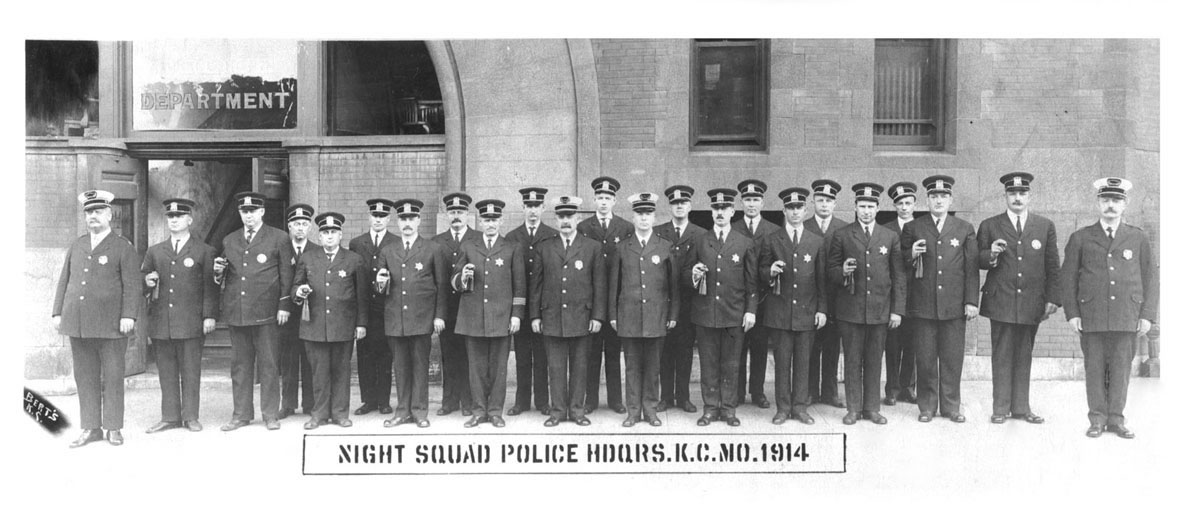History
The Kansas City Missouri Police Department began on April 15, 1874, when the Board of Police Commissioners, with George Caleb Bingham (famed Missouri artist) as its president, appointed Thomas M. Speers to fill the office of Chief from April 15, 1874, to May 4, 1895. No chief since that time has held the office as long as Chief Speers. Chief Clarence M. Kelley, who in 1973 resigned to become the second permanent Director of the Federal Bureau of Investigation, was head of the Kansas City Police Department almost 12 years and was second-longest serving chief. Both of these men were far advanced in their talents and actions in the field of law enforcement, capable of giving the most to the citizens of Kansas City for the dollars spent and the manpower available.
The City Council, heavily swayed by a corrupt Tom Pendergast, approved a home-rule ordinance in 1932 that brought KCPD under city governance for the first time since its 1874 inception. Previously, it was governed by a board of men appointed by the governor. Corruption of the police force ensued.
In 1939, Missouri Attorney General Roy McKeltside came down hard on the corruption generated by the Pendergast Political Machine. Missouri Governor Lloyd Stark had the police department returned to state control under commissioners that he appointed. Thus was reinstated the original form of KCPD governance – a governor-appointed Board of Police Commissioners, and it’s the system used today. (An historical note: this new Board in 1939 appointed a new police chief, Lear B. Reed, and charged him with rooting corruption out of the force. About 50 percent of KCPD employees were fired at that time.)
Many of the department’s historical artifact are on display on the main level of the Kansas City Regional Police Academy, 6885 N.E. Pleasant Valley Rd., Kansas City, Mo.
View the names of the fallen officers who died in the line of duty and the year they died on the Memorial Page.
Click here to visit the Kansas City Police Historical Society.
